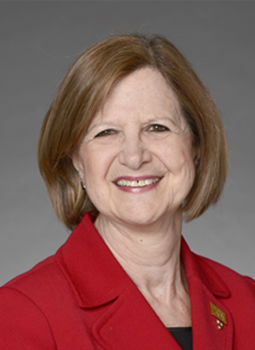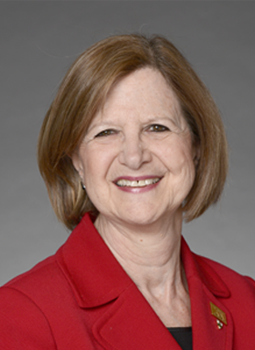During a Nov. 13 virtual media conference, RNAO called on Premier Doug Ford to immediately impose a 28-day lockdown in all COVID-19 red zones. The government heard our call and announced a lockdown starting Nov. 23. While we welcome the new and absolutely vital restrictions, we cannot help but wonder why it took more than a week to put them in place. We also question why these restrictions were not implemented in all red zones, rather than just Toronto and Peel.
It’s difficult to report – and even harder to understand – how or why precious time is consistently squandered by our provincial government, which does not seem to always realize that delays in action, and any softening of restrictions, result invariably in a larger burden of illness, greater loss of life, more health system challenges, including ICUs at capacity, and economic calamity. COVID-19 doesn’t take breaks. And neither should we.
When I wrote my April 2020 column, we were at the height of the first wave of the pandemic. RNAO’s focus at that time was nurses’ concerns about access to personal protective equipment (PPE) and about conflicting messages around restrictions and quarantine. I shared details of RNAO’s 24/7 program to round up as many RNs, NPs and nursing students as possible to help with the crisis (VIANurse). And I shared our absolute resolve to advocate on behalf of vulnerable populations, including residents in long-term care (LTC) homes and people experiencing homelessness.
The summer brought with it a promising trend downward in case counts and we all had a moment to catch our collective breath. Why didn’t the government – despite the insistence of many, including RNAO – take advantage of this precious time to prepare for the second wave? Why didn’t it heed our advice to limit gatherings of people within confined spaces and push for ongoing hand washing, physical distancing and masking? Had these steps been taken, it is most likely that we would have significantly limited the impact of this second deadly wave. Actions based on the precautionary principle would have better prepared us, especially in relation to the health human resources needed to ready us for the expected ‘Twindemic’ – the start of influenza season and a surge in COVID-19 cases.
Although the Nov. 23 lockdown means more closures and tighter restrictions, we will continue to see the number of cases increase in nursing home residents, as well as more COVID-19-related deaths due to staff shortages.
During the summer, RNAO insisted that a fulsome plan of action for this second wave needed to be in place before school began in September. We pushed for the closure of all non-essential businesses, including bars, strip clubs and casinos. And while we spoke out about tighter measures, public health units in Toronto and Ottawa called for the same. As children headed back to school, assurances of safety and decreasing case counts would allow them to get back to learning. But again, our calls for reassurance went unanswered, as did our push for the army of health professionals for LTC and ICUs that should have been hired in the summer.
RNAO has not been alone in its plea for faster and more decisive action. Many epidemiologists and infectious disease experts have also been urging the closure of indoor, non-essential services such as bars, restaurants, gyms, casinos, places of worship and other non-essential gatherings.
During a lengthy conversation with Premier Ford on Oct. 6, I again pleaded with him to heed our warnings. By the time he acknowledged on Oct. 9 that additional measures were necessary, he was already a month too late. The Nov. 23 lockdown in Toronto and Peel was also a month too late.
Top epidemiologist Dr. David Fisman and others did not mince words when they noted recently that if we act when we see hospitalizations up and ICUs filled – as is happening now – we are acting one month too late. Similarly, if we wait for COVID-19 to start impacting on vulnerable age groups – as we are seeing now – we are, again, acting too late.
Although the Nov. 23 lockdown means more closures and tighter restrictions, we will continue to see the number of cases increase in nursing home residents, as well as more COVID-19-related deaths due to higher illness and chronic staff shortages. Several hospital ICUs are becoming dangerously full and RN shortages are next. The solution is simple: introduce tighter restrictions so we can suffocate this virus before it suffocates us.
RNAO remains firm in its message to the province: hire, hire and hire. We are already several months behind on this, and time is of the essence.
As I write this column, we are at the height of our second wave of COVID-19 in Ontario. Fast and decisive action, coupled with a solid plan to protect those most vulnerable among us, is critical. Nurses know it, and our collective voices continue to push for this imperative.
In fact, RNAO has had an army of fighters – you – members – actively joining in our call for what’s important during these difficult times. You have been working hard on the frontlines, and advocating in the halls of power. And you make me so very proud. Your efforts, and the unwavering commitment of so many Ontarians to adhere to restrictions for the greater good, allowed us our brief reprieve in August. We have to keep working hard to squash this second wave and obliterate this nasty virus.


